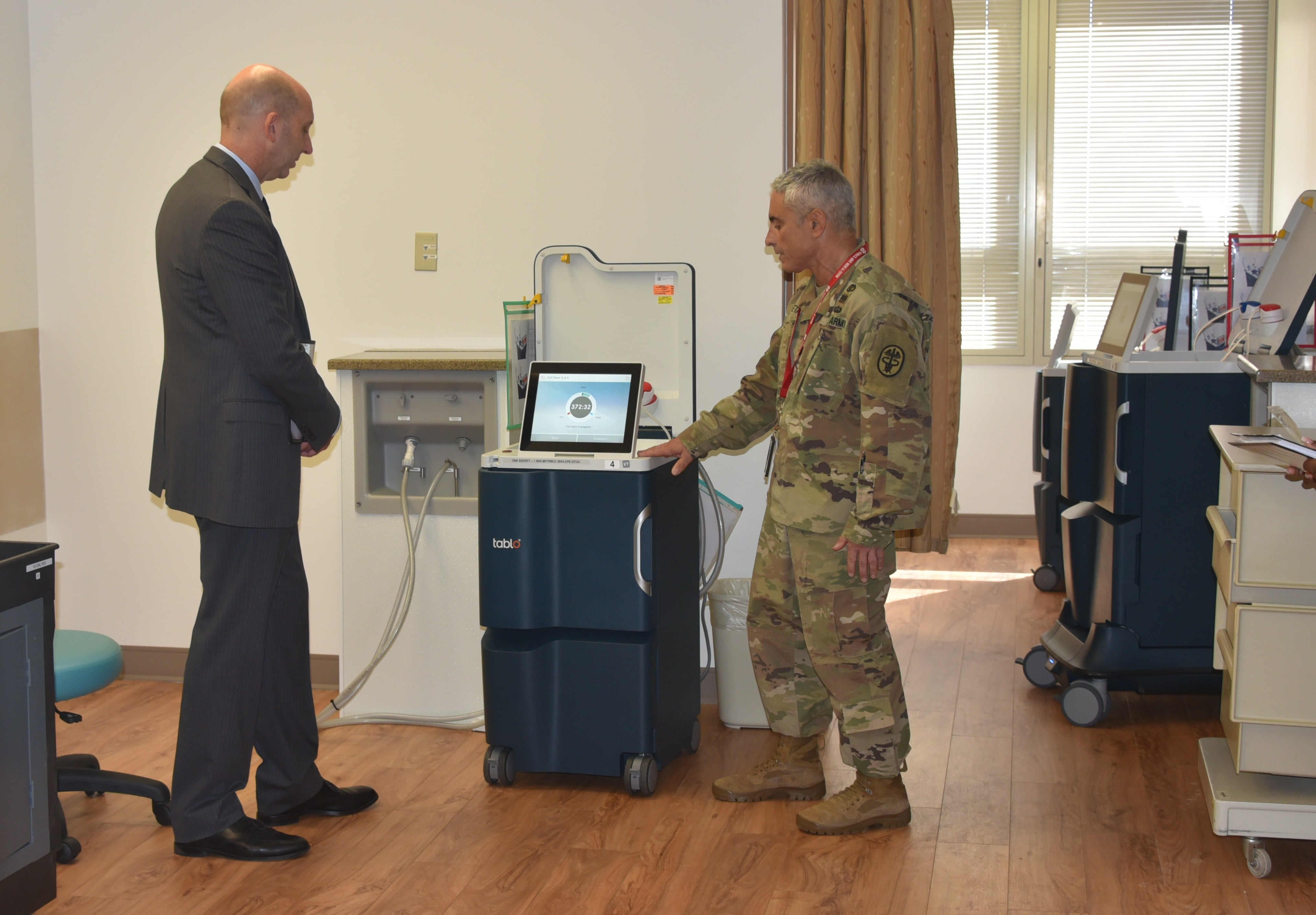Call it an early out explosion. Early outs are on the rise. It’s been 16-months since voluntary early outs came back in May 2014Since the service began offering them 16 months ago, the numbers of monthly quotas ratings offering forthese early tickets home have more than doubled, along with the number of discharges. as have the numbers of actual discharge quotas being offered.
The Navy brought back these back under a early outs under an all new Enlisted Early Transition Program in May 2014 that allows sailors in targeted ratings to leave the service up to two years before their commitment is up. Since then, 816 sailors out of 881 who applied for early release — 93 percent — have been approved to leave active-duty with an average of 14 months shaved off their enlistments.
Still, these early outs aren’t being offered to everyone. Instead, The program is targeted at overmanned ratings and year groups, and is frequently adjusted to reduce those manpower clogs heavily controlled to target very specific overmaning in the ranks, where advancement and reenlistment are exceptionally tough. The goal is to give sailors who'd like to leave this opportunity, and reduce the chances that those who stay in uniform will have their re-up rejected in rate or will suffer from paltry advancement and risk being forced out at their high year tenure cap.
"I'd say the program has been a success in what it set out to do and has contributed, along with other factors in many cases, to improving the health of ratings where we have offered opportunity," Capt. B. L. Deshotel, the head enlisted community manager at Navy Personnel Command, said. "I'm very positive in some ratings that if we put out more quotas we could get more applicants."
So if you are eligible — for the program, now might be your time.
No "volun-told" here. DeshotelDishtowel said that the early out program is 100 percenttotally voluntary.
"This is a non-voluntary-force shaping measures and allows us to offer some sailors the chance to leave early and, as a result, free up greater opportunity for sailors desiring to stay Navy," Deshotel said.
This means, officials say, Simply getting out early won’t impact the kind of discharge you get — it will be a fully honorable discharge, officials say.
Still, there could be other consequences to consider. as sailors seeking early outs need to be aware that Whittling off active-duty time from shaving time off your could have a direct impact on your GI Bill eligibility — or at least the amount of benefit you rate.
So, if you're still interested in an early out, read on.
How it works
Officials aren't opening the doors to everybody. Only those in selected overmanned ratings, paygrades and year groups can even apply to get a ticket home.
This early transition program, personnel officials told Navy Times last year, is targeted to sailors with 14 years of service or less and in pay grades E-6 and below — those subject to re-up rules under the Career Waypoints re-enlistment approval system, known as C-WAY.
Sailors in eligible skills are able to leave the service up to two years early — often with as little as two years of service.
Early out quotas are set monthly by enlisted community managers who publish those vacancies on the Navy Personnel Command Web page.
As of Oct. 1, Currently, there’s 755 offerings in 21 different ratings. Both of those tallies numbers have essentially doubled since the program was brought back in it’s current form last year, when 378 sailor quotas across 10 ratings were offered the chance to leave.
The ratings now eligible run the gamut: The current crop of ratings come from five different communities has eight aviation; six Seabees; four engineering; two surface operations and one supply ratings qualify.
In the past 14 months The ratings on the list as manning levels change, so officials say that interested sailors should check the list every couple of weeks, adding that overmanned specialties could become eligible.
"There's a natural fluctuation in which ratings are on the list, so it's best that sailors check it often," Deshotel said. "It goes to the purpose of the program, which is to bring down the numbers of overmanned ratings, so offering those who want to leave the chance will then open up advancement and retention opportunities for sailors who want to stay."
As a result, With changes in manning levels, officials will tweakadjust ratings and quotas in the future to target overmanned skills; the latest quotas will be available on the Navy Personnel Command website.
With retention still high, officials say they needed a way to relieve pressure on any rating or part of it that's and officials say that any rating or part of a rating that is 104 percent manned ing or more, iss a candidate to make the list.
Officials now track manning down to That's because officials track manning not only on an overall basis these days, but more important, they now track down to the paygrade and sometimes Navy Enlisted Classifications, too. Sometimes the most important category is what is becoming even more important at times is year group, the year you entered the Navy. That alone could determine within a given rating or NEC skill whether you will be allowed to reenlist — and or to now go home early if you choose.
For example, The Damage Controlman rating is a good example. They're overall manned at 102.3 percent of where they're required to be by the end of this fiscal year. That's considered "balanced" by Navy standards. First-term sailors, known as the zone A re-enlistment group, are manned at 100 percent and many are eligible for re-up bonuses.
But under the lid, there's problems in the DC rating. This is especially true at the E-3 and E-4 levels. This within this rating that officials are trying to iron out, mostly manning among first-term sailors, known as the Zone A reenlistment group, bit here, too, you can't go with appearances, on paper, this zone is at a perfect 100 percent manning level. There's even re-up bonuses for second term sailors being offered.
perfect example of how detailed this early out program can get. Currently they're offering XX quotas for early outs
According to data from Navy Personnel Command, as of Oct. 2, overall, DC's were manned at 102.3 percent of where they're required to be by the end of this fiscal year.
You have to dig even deeper to find what officials are worried about, which really amounts to E-3 and E-4 level, which are 110 and 108 percent manned respectively.
Where The problems lie is in year groups 2012 and 2013. The 2012 year group is slightly over their manning and currently up to 20 of them from any paygrade are eligible for an early out.
The problem is worse among the 2013 year group, which has double the number of sailors needed. Though '12 is just slightly over where their need manning wise, '13 has nearly double the numbers needed. Of the nearly 600 sailors currently in the DC rating and in the 2013 year group combination, nearly half of them are at the E-3s level. At the moment, This is contributing to a much lower advancement shot to E-4 — 29.435 percent on the latest exam, nearly 10 percentage points under the Navy-wide average of 37.92 percen.
If this problem isn't remedied, officials know, those advancement challenges could follow these sailors for years to come.
The 2013 yeargroup from DC isn't offered early outs yet, but it's likely they'll be on the list soon. Early outs could remedy an advancement slowdown. Without a remedy, clogs like this one will impact advancement with an increased chance of high-year tenure separations at eight years for E-4 and 14 years for E-5. There's also the possibility that re-enlistment opportunities could drop and these sailors won't be able to re-up in rate.
A total of 208 sailors were denied re-enlistment in fiscal year 2014, the latest year for which data was available.
First, it could impact eventually impact advancement to E-5 and down the line, could cause high-year tenure separations for E-4's hitting eight years and eventually E-5's at the 14-year mark.
And reenlistment opportunity which is currently good could could also drop considerably in two years, when these sailors begin to hit their end of obligated service is bound to be quite low and many sailors could find themselves not able to re-up in rate.
As of Oct. 1, this year group alone among DC's is now in the window to apply for the early outs and though officials have yet to publish quotas, ample opportunity is available to apply to get out early and avoid any chance of involuntary separation in a few years time.
On the other end of the spectrum are the Seabees, which have seen commands shuttered and billets cut in recent years. numbers of units and thus billets at nearly every paygrade cut drastically over the past few years.
And it's likely to be a year or more until opportunities improve in hard hit ratings like it will be at least a year or more before it really starts to get better possibly longer one of the hardest hit ratings, Utilitiesman, where acurrently overmanned at 107 percent overall. Advancement is well below Navy-wide averages and Zone A and B retention is below average at the moment.
" '05, 06 & 13 yeargroup will remain competitive for foreseeable future, consider all options including conversion and EETP," a September note on the UT rating "Community Overview" rating health slide on the NPC website read. The note also included many conversion opportunities to fleet ratings.
As of September, UT was offering 34 total quotas across eight year groups between 2003 and 2013. Only 2009 and 2011 are excluded along with anyone holding four critical NEC's of 5633, 5931, 5932 and 5933.
If a sailor believes his skill is overmanned but doesn't find it on the list, officials say it's OK to ask questions through proper channels by sending a message to their community manager through their career counselor.
The sailor's request must be approved by their commanding officer before it Before a request gets to the community managers, who have the final say, it must be approved by the commanding officer. If he or she says no, that's it: There isn't an appeals process and commands don’t have to forward nixed requests that have been nixed at the unit level.
First-come, first-serve
Critics have long argued that previous early-out programs have failed because skippers don't want to are often reluctant to let sailors go early without a relief anywhere in sight or guaranteed in writing.
And That’s still the case with this program. A relief isn't guaranteed until an early out sailor would have normally left their ship or the service. The current rules allow COs to discharge sailors up to three months early.
But Deshotel says that he hasn't heard complaints from the fleet about this and officials have said that fact and officials told Navy Times at the time the program was reinstated last year that even though there aren't guarantees, efforts will be made to fill the billet as soon as possible.
"When I go on my fleet engagement trips, I have received no negative feedback from CO’s on the EETP," he said.
While Having an unfilled gapped billet would naturally weighfactor into a skipper'scommander’s decision to approve or disapprove, he says, but most seem to open to up their aperture and making their decision while considering other factors, Deshotel said. e their decision with that as just one factor among others to weigh.
"Some CO’s have mentioned in their endorsements to us that the fact that they are going to probably suffer a [manning] gap for allowing their sailor to separate early, they feel that the action is in the best interests of the sailors and the Navy," he said. "We see that routinely." from CO’s who feel that way.
But If your CO signs off, applications that make it to the community managers have a 93 percent approval rate. Of the 881 who have applied so far to NPC, 816 have gotten the final OK.
Deshotel says most of those who've been turned down were because they weren't in an eligible rating. Another factor is if a sailor who holds a of the few who have been turned down for this program have been because they aren’t eligible for the program. Some aren’t even in an eligible ratings while others might be hold a critical NEC that specifically excludes them from applying, even if they meet all other requirements.
"The overwhelming majority of disapprovals are due to the fact [that] sailors applying but are not eligible for what they are asking for," he said. "For example, they are requesting to separate earlier than the required 24 months allowed or they’re not meeting the parameters for eligibility set out in the NAVADMIN — we’re even receiving some requests from sailors in ratings that there are no published quotas for."
In some overmanned ratings, sailors have been disapproved he also says disapprovals have happened because the quotas have been used up.
"They're given out on a first-come, first-served basis, and once the quotas are removed, sometimes quotas are trickling in for a while after that and we have to disapprove them," he said.
Other factors that could exclude an otherwise eligible sailor from applying: are those currently under permanent change of station orders; those identified to fill an individual augmentee assignment; or those currently on a Department of Defense area tour.
No early-out quota offerings come from ratings and paygrades offering Selective Re-enlistment Bonuses. Should that change in the future, sailors receiving SRBs who take the early outs would forfeit future bonus payments and could be ordered to repay bonuses for time they won't serve.
Once granted a quota, sailors won't be eligible to compete for advancement, and will be tagged in C-WAY. they'll be identified in the Career Waypoints re-enlistment approval system.
Think twice before applying. Sailors with approved early outs who change their minds may find it tough to get their early out canceled. Those requests will be handled on a case-by-case basis. and And if sailors change their minds, officials say it will be tough for approved sailors to change their minds and decide to stay and any request to pull someone application will be dealt with on a case by case basis with no guarantees. If allowed to stay, sailors will have to compete for re-enlistment in the existing C-WAY system.
Complete details on early out eligibility are available in NAVADMIN 103/14. of the program and all the rules are the same today as when the program was re-started with the release of NavAdmin 103/14 on May 8, 2014.
And Right now this is the only voluntary early out offering in program the Navy has and there are no plans to offer further incentives to thin out overmanned skills. The service has opted against allowing early retirements for sailors with 15 years or more. It has been used in a few cases for those discharged in 2012 after being , this includes early retirements, an option available to the Navy and the other military services for the next few years, but that has only been used for a few discharged in 2012 after being cut by 2011’s Enlisted Retention Boards. Don't expect to see any more early retirements offered, officials say.
Early retirement program allows those with 15 years or more to retire. Right now, officials tell Navy Times there are no discussions on the table to offer that level of early out as the service, looking at stable end strength for now doesn't have the need to.
GI Bill impact
Leaving early can have an impact on your education benefits, so carefully consider this factor be carefully considered. Because First term sailors could possibly apply for this program to leave up to two-years early in a four-year reenlistment,sailors who leave early should know the possible impacts on their veterans education benefits.
Veterans with 180 days of active duty or more are already eligible for basic vets benefits. But education benefits are a little different. Under the Post-9/11 Veterans Education Assistance Act of 2008, sailors with a minimum of 90 aggregate days beginning on or after Sept. 11,ember 2001, become eligible to receive educational benefits. Full benefits are only available after 36 months of qualifying active-duty service and are pro-rated for those discharged prior the 36 months threshold.
A first-term sailor who opts to leave the service after only two years into a four-year enlistment, for example, will have only a 60 percent post-9/11 GI Bill benefit. By staying for one more year, to 36 months, that sailor would earn a 100 percent eligibility — worth thousands of dollars more a year.
In addition, sailors with obligated service because they've transferred their post-9/11 GI Bill entitlement to a family member must fulfill that obligation, otherwise the VA will not pay the benefits to that family member and also could try to recoup any benefits already paid to them.
Mark D. Faram is a former reporter for Navy Times. He was a senior writer covering personnel, cultural and historical issues. A nine-year active duty Navy veteran, Faram served from 1978 to 1987 as a Navy Diver and photographer.





